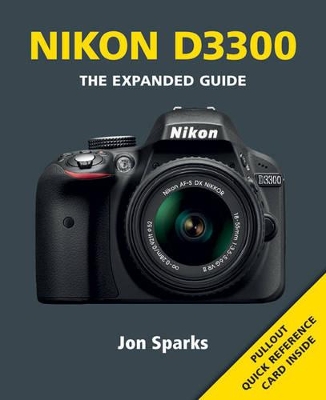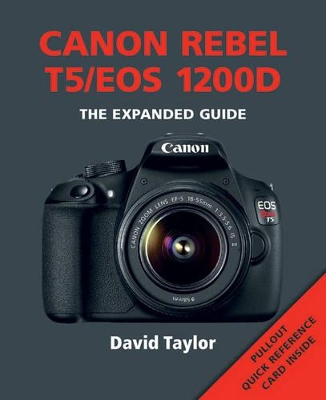Expanded Guides
6 total works
The Canon EOS 7D Mark II is an update to the classic 7D model, widely regarded as an excellent APS-C sensor DSLR, aimed at the serious enthusiast. The new model boasts faster burst shooting, improved autofocus and a much broader lSO range, contained in one of its best-built camera bodies. For stills photographers, the Mark II offers an all cross-type, 65-point AF module that works in conjunction with a 150,000-pixel RGB + IR metering sensor, offering the latest version of the 'lntelligent Tracking and Recognition' (iTR) focus system featured in the EOS-1D X. With iTR engaged and an initial focus point selected, focus can be initiated with a half-depress of the shutter-release button, leaving the camera to track the subject as it moves across the frame. The camera's continuous shooting rate is 10 frames per second, previously limited to pro-grade sports cameras.
This is a comprehensive user's manual to the world's most compact full-format digital camera system. It includes a step-by-step guide to the camera, professional guidance, advice and practical tips, as well as a pull-out quick-reference guide card. With a price tag that places it in the realm of the aficionado who appreciates fine quality and stylish good looks, the Leica M9 is the world's most compact full-format digital camera system and carries the 100-year heritage of the original Ur-Leica film camera into the digital age. Written by expert photographers, "Ammonite's Expanded Guide" to the camera explains it in complete detail, providing a comprehensive user's manual that includes a step-by-step guide to the camera's basic and advanced functions, professional guidance, advice and practical tips, as well as a pull-out quick-reference guide card. Professional photographer David Taylor explains how to get the very best from this modern classic.
This book is intended for entry-level digital SLR users. It is a comprehensive step-by-step guide that includes a pullout quick reference card. UK author Jon Sparks provides practical tips on how to get the best from this versatile camera. The D3300 is Nikon's latest entry-level DSLR. It is designed to marry the versatility and image quality of an SLR with the simplicity and ease of handling of the best digital compacts. Nikon has always valued continuity as well as innovation; e.g, it has retained its tried and tested F lens-mount (originally introduced in 1959). This means it's possible to use many classic Nikon lenses with the D3300. At first glance, the D3300 may look like a modest upgrade to the D3200, but there are some significant changes under the surface. The camera is almost exactly the same size as its predecessor, but significantly lighter. It has a 24-megapixel sensor; the pixel count may be the same as the D3200, but there's a major difference as the D3300 has dispensed with an 'anti-aliasing' filter in front of its sensor to make images even sharper.
Intended for entry-level digital SLR users, this camera helps to capture brilliant still and video images. It is a comprehensive step-by-step guide that includes a pullout quick reference card. UK author David Taylor provides practical tips on how to get the best from this versatile camera. Canon's Rebel T5/EOS1200D is the latest model in the company's DSLR line-up, replacing the Rebel T3/EOS 1100D, and intended for entry-level photographers. The camera features an 18 megapixel CMSOS (APS-C) image sensor, a high-performance DIGIC 4 image processor, and a nine-point autofocus (AF) system. It is equipped a continuous shooting mode of up to three frames per second (fps) - ideal for capturing fast action. An ISO range of 100-6400 (expandable to 12800) allows shooting in conditions from bright natural outdoor lighting to dimly lit indoor settings. The T5, which comes with an 18-55mm lens, is also compatible with the complete lineup of Canon EF and EF-S lenses detail. The camera's Full HD Movie mode allows shooting of high-quality 1080p movies with ease.
The PowerShot G1 X is the latest and, arguably, the greatest of the 'G' series of compact cameras produced by Canon, aimed at advanced amateur and professional photographers, has achieved through tactile controls, a wide range of creative functions and a more functional design aesthetic. The G1 X is well specified, with logical, easy-to-use controls. UK Author David Taylor's comprehensive step-by-step guide includes practical tips on how to get the best from this versatile camera.
UK author David Taylor explains the difference between inkjet, thermal and laser prints. It explains the characteristics of types of paper and how to choose between dye and pigment inks. It contains practical printing information that includes step-by-step details on making a test strip, print settings and troubleshooting. Most digital photographers will wish to output their images for display purposes, so it's essential to have an understanding of the printing process and the options available. How, for example, do you ensure that your print matches what you see on your computer screen? Professional photographer David Taylor offers invaluable guidance and expert tips for all keen photographers on the basics of printing, from choosing a suitable printer and printer software to selecting the right papers and inks.



